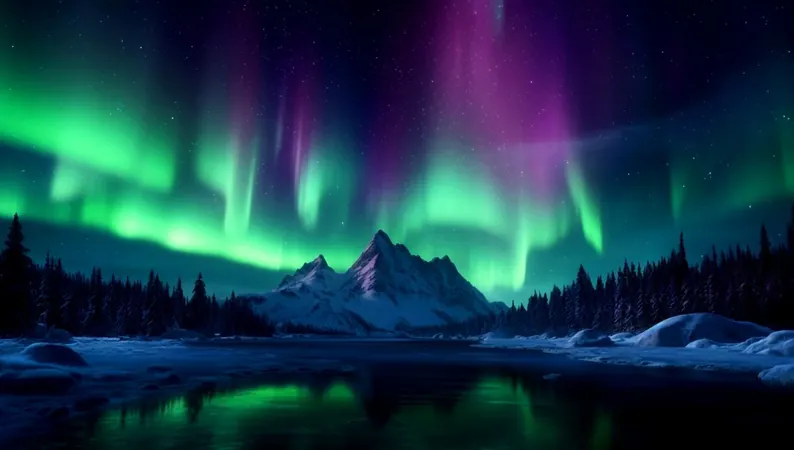
Catastrophic Solar Storm Heads for Earth Today—Are You Ready?
2024-12-31
Author: Yu
Today, Earth braces itself for a significant solar storm as the Sun unleashes its might, showcasing a spectacular display of cosmic fireworks. Currently at its solar maximum, the Sun has exhibited heightened activity in recent months, with intense solar flares, extreme geomagnetic storms, and stunning auroral sightings even at lower latitudes than usual. Scientists warn that today's events are not to be taken lightly.
Sunspot Region 3936: The Epicenter of Activity
The center of this solar activity is sunspot region 3936, known recently for its unprecedented eruptions. Over the last few days, this area has produced two potent X-class flares (X1.1 and X1.5), alongside numerous lesser M-class flares. Although there have been more powerful solar flares reported this year, the influence of these specific flares should not be undervalued. Notably, another sunspot region, 3932, also released an X-class flare, temporarily interrupting radio communications on the sun-facing side of the Earth, particularly impacting southern regions.
Coronal Mass Ejection and Its Effects
The imminent solar storm is primarily linked to a coronal mass ejection (CME) from sunspot 3936, which is projected to collide directly with our planet today. While other recent flares have sent their CMEs off course, this event is expected to affect us directly—meaning that the potential for technological disruptions, such as satellite communications and power grids, is elevated.
Aurora Borealis Viewing Opportunities
This solar storm may also grant sky-watchers stunning views of the aurora borealis, extending visibility as far south as Iowa in the United States. Across Europe, the northern lights could illuminate the skies from Scandinavia to much of the United Kingdom. Expect peak visibility in Europe around the morning hours (December 31), but be mindful that daylight may hinder sightings. For those in the Southern Hemisphere, the auroras are forecasted to be visible even over mainland Australia tonight as the storm arrives.
Tips for Observing the Aurora
To make the most of this celestial show, residents in affected areas should find a location with a clear view of the northern horizon and allow their eyes time to adjust to the darkness. Smart photographers can capture the magic of the auroras by using long exposure settings on their cameras, though to mitigate light pollution, it is advisable to keep phone screens dim.
Conclusion
In a world where solar activity can wreak havoc on our technology, understanding and preparing for these cosmic events may just make the difference. The spectacle of light and science happening above us is truly a reminder of our planet's connection to the cosmos—don’t miss your chance to witness this solar phenomenon!
 Brasil (PT)
Brasil (PT)
 Canada (EN)
Canada (EN)
 Chile (ES)
Chile (ES)
 Česko (CS)
Česko (CS)
 대한민국 (KO)
대한민국 (KO)
 España (ES)
España (ES)
 France (FR)
France (FR)
 Hong Kong (EN)
Hong Kong (EN)
 Italia (IT)
Italia (IT)
 日本 (JA)
日本 (JA)
 Magyarország (HU)
Magyarország (HU)
 Norge (NO)
Norge (NO)
 Polska (PL)
Polska (PL)
 Schweiz (DE)
Schweiz (DE)
 Singapore (EN)
Singapore (EN)
 Sverige (SV)
Sverige (SV)
 Suomi (FI)
Suomi (FI)
 Türkiye (TR)
Türkiye (TR)
 الإمارات العربية المتحدة (AR)
الإمارات العربية المتحدة (AR)